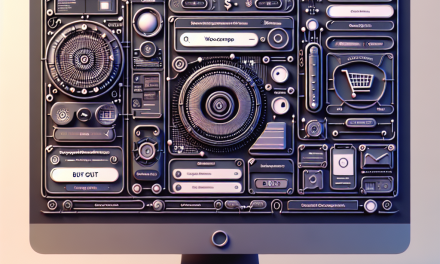In the digital age, first impressions matter. A website’s header and footer play crucial roles in user experience, guiding visitors and shaping their perception of your brand. But why settle for static headers and footers when you can enhance your WordPress site with dynamic elements? By personalizing these essential components, you can create a more engaging experience for your visitors, ultimately driving conversions and fostering loyalty.
Why Dynamic Headers and Footers?
1. Enhanced Navigation
Dynamic headers and footers can adapt based on user behavior and preferences. For example, you can showcase different menu items or links based on the user’s location or browsing history. Implementing a smart navigation system can reduce bounce rates and encourage visitors to explore your site further.
2. Contextual Information
Imagine a header that changes based on the content being viewed—providing users with relevant links, calls to action, or promotions tailored to their interests. This contextual relevance helps visitors feel understood and valued, enhancing their overall experience.
3. Personalized Call-To-Action
Dynamic footers can feature tailored calls to action, encouraging users to sign up for newsletters, explore services, or engage with your posts. By giving clear, focused actions based on user behavior, you significantly increase the chances of conversions.
Implementing Dynamic Headers and Footers
To implement dynamic headers and footers on your WordPress site, you can take advantage of various plugins and themes that support this functionality. Here are some popular tools to help you get started:
-
Elementor – This powerful page builder allows you to create custom headers and footers with ease. With its drag-and-drop interface, you can personalize each element based on user interactions.
- Learn more about Elementor here.
-
WP Header Images – This plugin lets you set different background images for headers across various pages, enhancing visual appeal and engagement.
- Check out the WP Header Images plugin page.
-
Dynamic Content for Elementor – This plugin enables advanced dynamic content options, allowing you to create a personalized experience for users based on custom fields and data.
- Discover more about Dynamic Content for Elementor here.
Utilizing WordPress Documentation
If you’re new to WordPress or looking to brush up on your skills, the official WordPress documentation is an invaluable resource. It provides comprehensive guides on everything from theme customization to plugin installation.
Best Practices for Dynamic Headers and Footers
-
Consistency: Ensure that your dynamic elements align with your brand identity. Consistent colors, fonts, and styles will help maintain a cohesive experience.
-
Simplicity: Avoid overwhelming your visitors. Keep your headers and footers clean and focused. Too much information can confuse or frustrate users.
-
Responsive Design: With the increasing use of mobile devices, ensure your dynamic headers and footers are adaptive to different screen sizes for a seamless user experience.
Conclusion
Embracing dynamic headers and footers is a game changer for your WordPress site. By creating a personalized experience, you not only engage your visitors but also increase the likelihood of turning them into loyal customers.
Ready to elevate your site further? Explore WafaTech NextGen WordPress Hosting for innovative tools and exceptional performance that will help you create a vibrant online presence. Discover more about WafaTech’s offerings at WafaTech NextGen WordPress Hosting.
Unlock the full potential of your website today!




